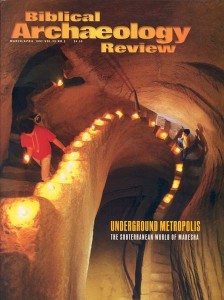No Trained Epigraphist Would Confuse the Two
The Siloam tunnel inscription is written in a very well known Hebrew script. The script is found on other late-eighth-century B.C.E. inscriptions carved in stone, such as the so-called Royal Steward inscription found in Silwan village in 1870 and now displayed in the British Museum.a It is also found on a very large number of late-eighth-century seals and seal impressions, including the familiar lmlk stamps, of which we now have more then 1,200 examples on jar handles and whole vessels. Hundreds of lmlk seals have been found in controlled excavations, and all belong to the time of Hezekiah (715–687/6 B.C.E.).
The Siloam script is not the same as the Hebrew script of the early sixth century B.C.E., and it is certainly not the same as the much later archaizing survival of the sixth-century script that we call paleo-Hebrew. The script of paleo-Hebrew inscriptions and manuscripts dating to the second century B.C.E. and later has a very archaic appearance in comparison with the other scripts being used to write Hebrew and Aramaic at that time. It is closer in appearance to the pre-Exilic script from which it is descended than to contemporary scripts in use in the Hasmonean and Herodian periods. But paleo-Hebrew script is not identical to its pre-Exilic archetype. No epigraphist trained in the scripts of these periods would confuse second-century B.C.E. paleo-Hebrew with sixth-century B.C.E. Hebrew, much less with eighth-century B.C.E. Hebrew.
Already a library member? Log in here.
Institution user? Log in with your IP address.

